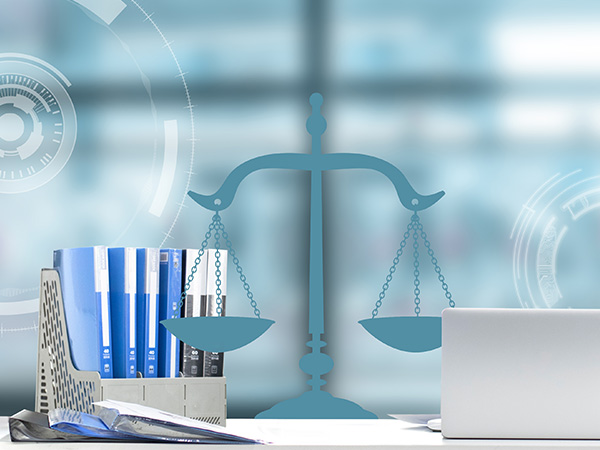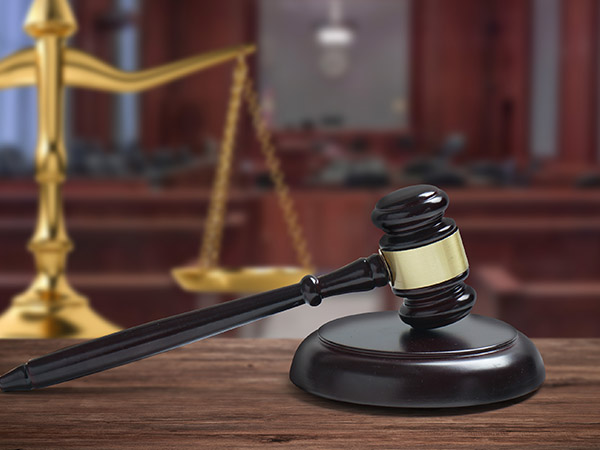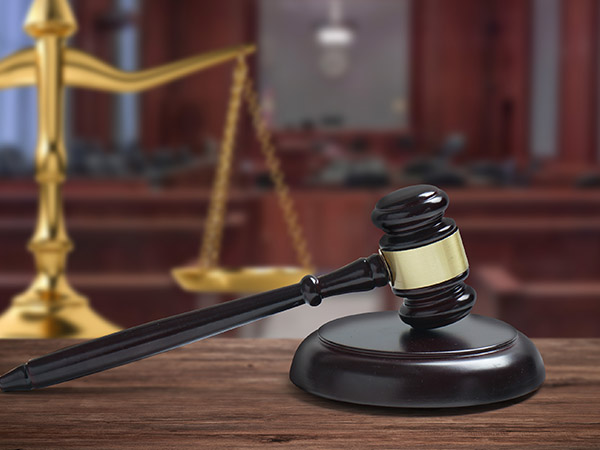The Need and the Pain in Evidence Preservation for Internet Corporations ?
Wang Jie, Legal Affairs Dept. of Alibaba Digital Media & Entertainment Group
With the rapid development of Internet business, the online contents formed an explosive increase. Much of the Internet infringement occurs and is retained on the Internet, but traditional evidence preservation is done through notarization. With new technologies, new methods of electronic evidence preservation appear, providing a new form of high efficiency in evidence preservation for proprietors. As demanders for electronic evidence, Internet corporations have great demand in their practices for collecting and preserving evidence. The author of this article will try to analyze, by combining common Internet corporate scenarios, the urgency in the need for electronic evidence preservation, as well as the pains and bafflement in practices.
Types of needs in evidence preservation for Internet corporations
As types of business vary for the Internet corporations, so do the corresponding scenarios for evidence preservation. No matter how varying, either on webpages or on mobile phones, static or animated, the evidence to be preserved, from the standpoint of rights, can be roughly categorized into two types, i.e., infringement and prosecution.
The first type of need is to preserve the evidence for infringement, i.e., to consolidate the evidence for infringing acts and facts, which can be further divided into two subcategories of preserving the evidence of infringement status, and the collection of evidence for infringing acts.
Preservation of evidence for status of infringement result is generally the preservation of evidence for the static infringement result, such as direct copying of an exclusive media publication by another website, counterfeiting of trademarks or product info page, etc., which evidence for the status may be preserved by such means as screen snapshot, etc.
Collection of evidence of infringing process on many occasions, is complicated because of the evidentiary process for the facts to be proved, as in a certain infringing website under the disguise of an Internet service provider, forging a hyperlink, but actually providing infringing contents. In another example, a game contents provider substitutes a game distributors SDK (Software Development Kit) with its own SDK, thereby reducing the distributor’s share it deserves. There acts, taken by their status, are hard to determine whether they are infringements, which can be done only by consolidating the fluid evidence, e.g., using a screen recorder to display the evidence collecting process, in order to establish the evidence.
The second type of need is to preserve the evidence for prosecution of rights. Preservation of prosecution evidence is usually to preserve evidence of one’s own activities, by establishing one’s innocence, to defeat questions or even denials regarding one’s own conducts. Key to prosecution is to complete the information of “3W”, i.e., the party (WHO), at certain point in time (WHEN) completed certain events or committed certain conducts (WHAT), where the time and the events may not be altered. Such need for prosecution evidence exists in following scenarios:
Evidence of intellectual property proprietorship: for proof of copyright ownership, or prior rights, etc., which is an act for preserving data of the work, for example, by consolidating evidence of the first publication of an article, to an effect similar to recordal of copyright registration.
Evidence of platform agreements or declarations: intra-corporate events voluntarily evidenced, such as e-commerce platform conducts displays or regular updates of user agreements, privacy agreements, sales events and games processes, etc., or game developers publish relevant notices on the game platforms, for which the businesses need to retain evidence, or retain evidence for the publicized conducts or for the contents of the notices, so as to exonerate themselves in in case of disputes.
To execute notice of deletions: This is to evidence corporate execution of certain legal obligations. For example, an Internet business as a platform must obey the principle of deletion upon notice under the Safe Harbor rule, i.e., upon notice of infringement from a proprietor, the business must, upon examination, remove the suspected infringing link, or unshelve an allegedly infringing app, for which the business needs proof for such immediate action on notice of deletion.
In sum, because of the varying types of needs for evidence, in addition to evidence to be collected from webpages and mobile terminals, the operators must adopted appropriate means and tools for different scenarios of evidence collection, sometimes at one terminal, sometimes at multiple terminals, and design the process of evidence preservation according to different facts and objects, so as to maximize acceptability of the evidence.
Characteristics of Internet evidence collection
To sum up, Internet evidence collection has the following five aspects:
First, timeliness. The actual of Internet infringement can occur at an uncertain time, or any time. Once it does, the evidence must be immediately preserved, or it’s gone for good. The infringement may take place late at night, or on weekend when the notaries public are off. The infringer may deliberately make it difficult to preserve evidence for the proprietors. Hence, it would be very convenient and efficient if the evidence can be preserved electronically in office or at home.
Second, extensiveness. Due to the extensive coverage of the Internet, infringement may occur at any place, and could target any location so that different contents may be delivered to specific locations. Some infringements occur only in tertiary or quaternary cities, where there is no business presence or local notarization is not available, making it extremely difficult to preserve evidence. Now, if remote evidence collection can substitute allopatric evidence collection, such as by virtual desktop or by setting up VPN, etc., it will greatly facilitate preservation of evidence in a remote place.
Third, the huge demand for evidence preservation. For Internet businesses, especially content providers, the everyday needs for collection and preservation of evidence is tremendous. Take the infringing website of literary works for example, because the infringing novel may include so many parts and chapters, each part having a number of chapter, and each chapter having so many sections, for which evidence must be preserved by URL for so many webpages. If done by traditional manual method, it will be extremely time-consuming. Now, if evidence can be obtained through mirror image by the “mirror - image principle,” akin to taking all the hyperlinks in the page, or by “Hash” technology, it will save a lot of cost, and increase efficiency.
Fourth, easy operation, and visualization. As previously noted, fluid evidence is needed for infringement on many infringing websites. Take traffic hijacking or false hyperlink for example, the best way to prove the entire infringing process is by recording the screen plus website capture, for ease of showing in court the entire process of preserving the evidence. But a defendant may raise doubt as to cleanness, safeness and reliableness of the screen-recording kit, or as to whether the computer, the Internet environment or the access net was clean, or genuine or effective. Now, the reliability, safety and objectivity of the third party’s evidence preservation kits and the technology used therein will become key factors.
Fifth, corporate backstage storage of megadata. For safety and privacy reasons, huge amount of corporate data info is stored in the corporate backstage servers. When notarizing the data, a notary public needs to log into the corporate intranet by appointment. Now, it will be much more efficient if it is possible to preserve the evidence for such megadata using evidence preservation kit on the corporate intranet.
In sum, in today’s fierce competition on the Internet, evidence preservation has become a routine job, for which a more efficient and convenient method approved by the judiciary is needed, taking the above aspects of electronic evidence preservation for the Internet businesses.
Pains and bafflement in evidence preservation for Internet corporations
In combination of the above characteristics, the pains and bafflement for Internet corporations in preserving evidence can be summarized into the following three aspects:
Firstly, effects of evidence obtained in settings of corporate VPN or Intranet
As noted before, large volumes of corporate data can only be stored backstage in corporate servers. For safety reasons, such intranetor back stage systems can be accessible only by logging onto the intranet or through VPN. Thus, the pain in the corporate neck is: no matter where to collect the evidence, in the notary’s office, or preserve evidence by means of third party evidence-collection kit, as long as the corporate backstage system is inaccessible through extranet, it would be impossible to consolidate the needed evidence. If the corporation conducts the evidence preservation using its own preservation kits, evidence is easily challenged due to lack of objectivity and alterability in the intranet environment. Thus, in most cases, the corporation will have to arrange a notary public by appointment to notarize the evidence in intranet environment.
Similarly, infringement setting when logged on from different cities will display different webpage information, and by using VPN, it could be simulated by logging on through a third city IP address. But once connected through VPN, due to identity and quality of VPN, the effect of the evidence can be questionable. Therefore, when obtaining evidence using electronic kit on corporate intranet, or using third party city or other IP addresses by simulating VPN to log in, it will be worth research and study how to guarantee validity of the evidence, how to prove that corporate intranet data has not been manipulated, and whether updated technologies could be used to prevent manipulation, or to prove that contents have not been manipulated for intranet or VPN reasons.
Secondly, judicial acceptability and validity of obtaining evidence using remote technologies such as virtual desktop.
There is indication that some service providers of electronic evidence provide links to third party notaries to accomplish online application for electronic evidence by online preservation using virtual desktop or installing client end. Such desktop evidence preservation has proved to have good client experience and is efficient, capable of preserving mobile process, with endorsement of notaries. But at the same time it creates bafflement as well for its users due to virtuality, such as cleanness and safety of the client end, and the necessity of endorsement by authorities on such client end, objectivity of virtual desktop environment or the Internet environment of the third party servers, genuineness and safety of data exchange between client end and the notaries, as well as the cleanness, when some kit providers use mobile phone preservation kits and the evidence app uses the phone, of the client mobile phone (e.g., whether the phone should be reset to factory settings, etc.)
Lastly, the difference and legal effect of Hash Summary and original evidence.
For data safety and trade secrets reasons, certain corporate information may not be divulged publicly as evidence. Now Hash summaries could be created through Hash Algorithm, that is, to preserve evidence on the data summaries. However, it is not certain yet whether such evidence could be accepted in court. Moreover, for evidence of copyright infringement, because of the multiple episodes, which would be too costly if every episode has to be played, whether Hash encoding of infringing work to be downloaded for added efficiency would be worth consideration.
Suppose the answer to the above is affirmative, there still remains a question, i.e., who is to execute the Hash operation. In a general infringement scenario, it is done by a third party kit provider to conduct Hash encoding of the original, but a corporation would also like to do it itself, so as to avoid excessive divulgation of corporation info, which leads to some problems, including validity of litigant Hash encoding and third party Hash encoding of the preserved evidence (how to guarantee objectivity), and what standard or principle to follow when Hash encoding. These all require further studies in combination with the case and technical details.
To sum up, in connection with characteristics and technical methods of the mainstream evidence kits, the businesses are mainly concerned with certain common features, including: how to ensure objectivity of timeliness, of the contents of the evidence, of the subject’s identity, and how to ensure safety and secrecy in the process of data transmission. These problems requires joint discussion of both bench and bar.
Thoughts on evidence preservation for Internet corporations
The evidentiary weight of the electronic evidence is the same as ordinary evidence, the only difference being that it is electronic, which is prone to falsification and manipulation. Therefore, an Internet corporation needs to rely on constant technical upgrade to identify genuineness, and expect institutionalized specifications would provide some practical guidance for the parties on using electronic evidence. For this, it is recommended that the modes of electronic evidence preservation may be improved in the following four aspacts:
Firstly, standards of examination of electronic data and principles of judicial approval be established. It is hoped to streamline from judicial perspective examination standards for electronic data evidence. It should prevent excessive maneuver that leads to waste of resources to be worsened when followed as precedents by future cases on one hand, it should, on the other, avoid omissions resulting in deficient evidence so that truth is never found, and judicial resources wasted.
Secondly, professional organizations be set up, to standardize the management of third party evidentiary organizations, and to issue technical rules. The third party evidentiary organizations should remain objective as a matter of legal nature, its technical means being standardized, and transparent. It is hoped that there should be specialized industry organizations or supervisory committees to regulate the conduct of the industry and clarify the legal status. Meanwhile, it is also hoped that through national or international standard industry associations there ought to be relevant electronic evidence collection and preservation standards, thereby the chain of electronic evidence for collection and preservation be complete and efficient so as to maximize avoidance of possibilities of insertions of extra data and falsification.
Thirdly, burden of proof and the point of shifting such burden be clarified. In combination of the characteristics of electronic evidence, it is hoped that the burden of proof on a particular party be further clarified. Electronic evidence , from gathering, storage, transmission, retrieval to introduction, may go through many stages, for which if the party is responsible for such evidence needs to produce proof against every possible doubt, the burden for the party would be tremendously heavy and the hurdle would be impossibly high. In litigation practice, it is frequently questioned, but only to the extent of theoretical possibility without any counter evidence. Therefore it is hoped that the point on which burden be shifted could be judicially clarified, e.g., by presumption of certain facts in most scenarios, or by reasonable best efforts with evidence, to satisfy the burden of proof and shift the burden to the other party which questions the evidence only with rebutting it.
Fourthly, objective third party be regulated by system. Compared to international practice, the standard of evidence is high in our courts. Take the US practice for example, a proprietor detecting an infringing webpage may capture the screen of the page and ask an attorney to provide warranty or recognition of its genuineness and then introduce it in court for admission, in other words, the attorney endorse the evidence. Suffice it to say that this system hinges on perfect personal credibility and deep-rooted belief in the system, along with the local judicial system, but the mindset is correct for such a system. In our country, personal credibility system is being established, but it should impose too heavy a burden for initial evidence. It is recommended to simplify the process for prospective evidence by imposing expost facto liability for forging evidence.
Summary
How to facilitate preservation of Internet evidence and increase its admissibility is not only an issue of corporate concern but also calls for attention among legal practitioners, scholars, e-kit traders and the judiciary. It is hoped that this article may cause resonance among practitioners in the profession, raising their awareness and help push forward electronic evidence to further improvement.
(Translated by Zheng Xiaojun)










